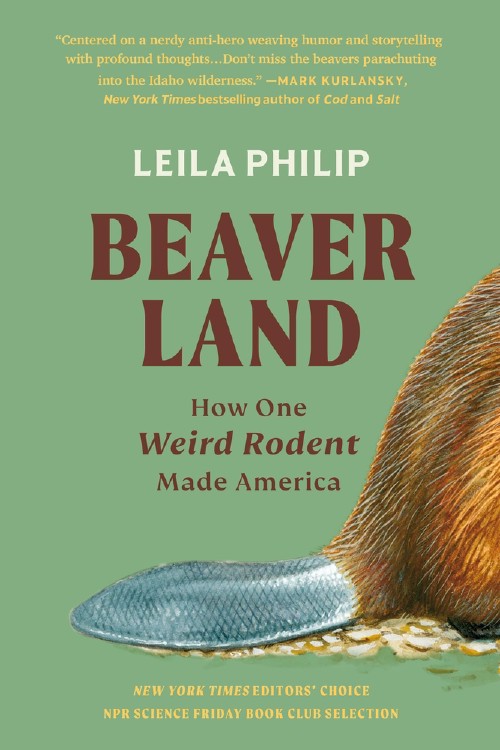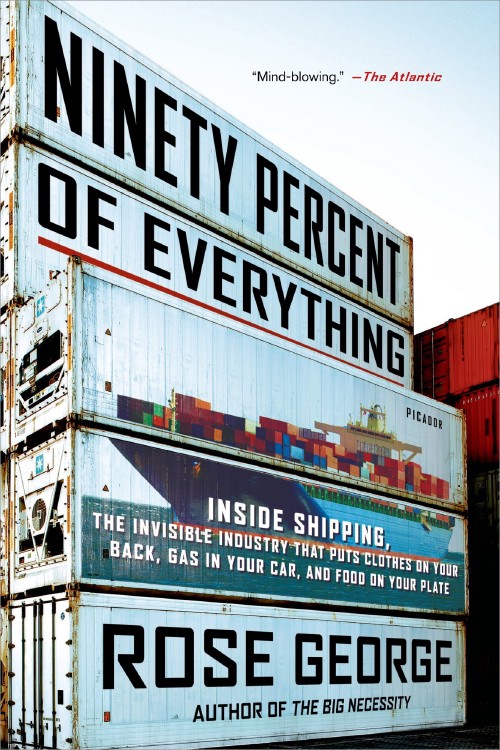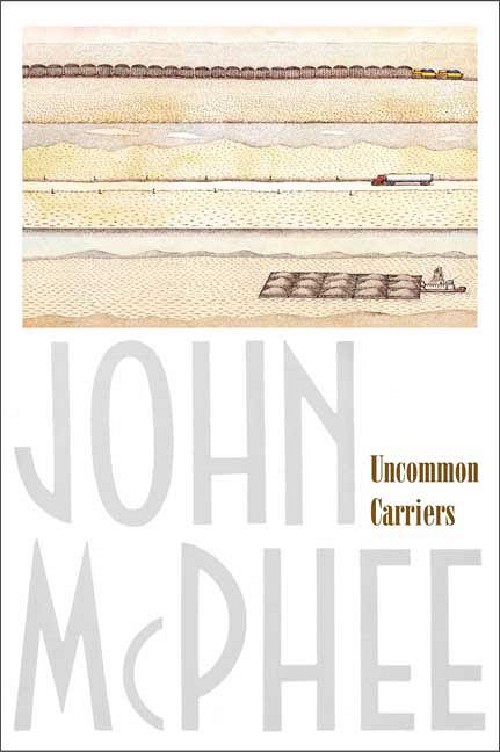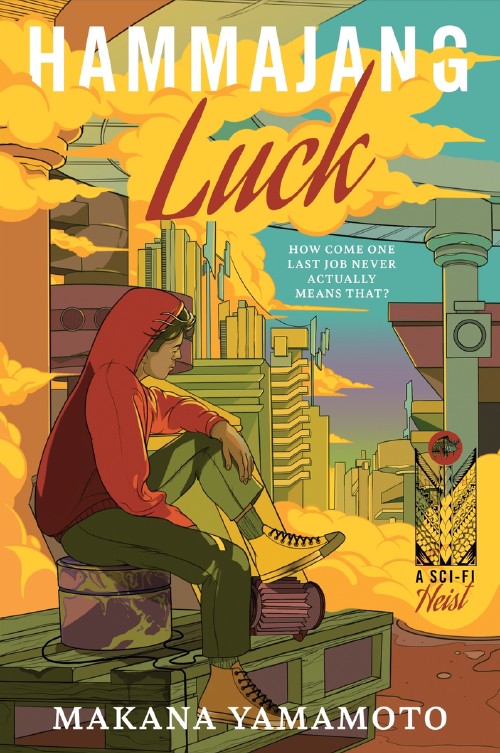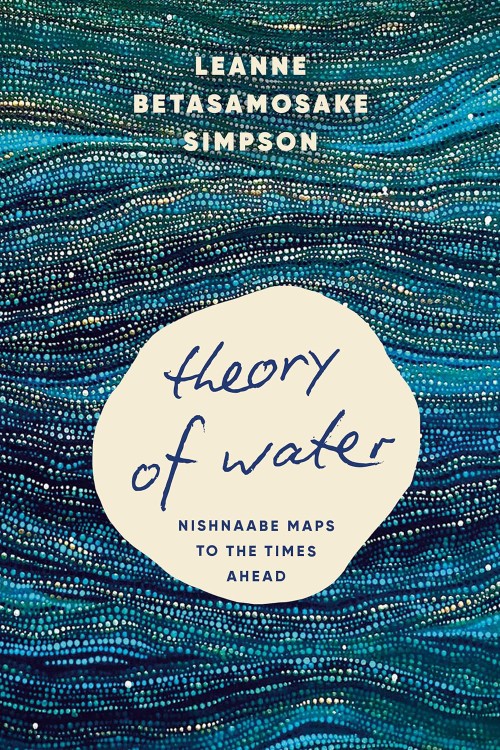
Theory of Water
Copyright 2025, Haymarket
Climate Change, Indigenous Issues, Cultural Analysis
Note: Nibi is the Anishinaabe name for what in English is called water.
I discovered that nearly every day the snow was slightly different along the trail at Jackson Creek. I became fascinated by sintering. When a snowflake falls from the sky and lands on the earth, it immediately begins, or perhaps continues, a transformation as it forms bonds at temperatures below zero (this is not a melting process) with its neighbouring snowflakes or crystals to create the fabric of a snowpack.
Sintering is a joining. It is a communal transformation that creates a fabric of former snowflakes bonded to each other. It is a process of changing from a singular, angular snowflake to a more rounded form of bonded crystals, or a snowpack— a denser, more compact, linked formation.? As the snow sinters, it settles and becomes denser, stronger and soggier under the influence of gravity. Sintering is slow deformation. [p17-18]
My ancestors, through embodied practice, physical and spiritual, and through our shared “culture” —although I cringe when I type that word because culture cannot stand in for all thought, theory and practice resisted, critiqued and mobilized against capitalism from the time of contact with Europeans. Our fight is our critique. And as Robinson teaches us, rebellion is an embodied critique that can lead to intellectual traditions—in the case Robinson refers to, the Black Radical tradition. Indigenous peoples mobilized and lived “otherwise” because they had material and ethical imperatives to do so. And this ethical imperative came from the land and the waters, from their intimate relationship to these. [p23]
Sintering is fractal-like, expanding and contracting across scales. It is non-linear, iterative, transformative and adaptive. Sintering creates possibility. It is reflected in Indigenous practices of politics, economy and governance. And it is crucial collective work in creating constellations of co-resistance. [p24]
I understand love encoded in the word ghwe as being unconditional; I understand love as an organizing force, a motion and an ethic of caring. I understand love as communal—not bound up in the individual or with the romantic. And of course, I understand it this way because this is how Doug understood it. As an ethic that is animated within our relations, and from there propels customs of kindness and generates empathy and systems of care for all forms of life that make up our world. It is not a structure that negates emotions or normal responses to the violence of colonial-ism, responses that might include anger and resentment and even violence. Love in this form is a re-enactment, and like all such practices it can be wholeheartedly manipulated and exploited under colonial rule. It can be conditioned, manipulated and weaponized.
It is also an organizing force in the Nishnaabeg cosmos— one amongst many other organizing forces, but an organizing force nonetheless. [p27]
It could be that life is fragile.
It could be that it took a lot of research and difficult labour to make a sustaining global ecosystem that supported a cacophony of life.
It could be that in making life, we don’t always get it right.
It could be that when everything is created instantly and perfectly, it doesn’t last.
It could be that life needs continual remaking to renew itself.
It could be that in isolation no individual or community has the knowledge we need to build worlds. It could be that we need to make the knowledge intercommunally.
It could be that world making is struggle. [p30]
Lakota philosopher Vine Deloria Jr., in God Is Red, writes that one of the most significant differences between Indigenous and Western metaphysics is that land is central to Indigenous modes of thinking and being and to our ethical formulations. He writes that places or place making are sites of meaning making, “the highest possible meaning,” and that most Western societies, by contrast, derive meaning from time in relation to place, with the narrative of development and history being of central importance. Deloria concludes that this fundamental difference, with Indigenous peoples philosophically concerned with space and Western peoples philosophically concerned with time, makes understanding and meaning between the two thought systems difficult. [p46]
Because of the map, Gizhiigokwe stopped searching for the route to the new world and looked inside herself to make a crucial connection: the insight that the missing essence in Gzhwe Manidoo’s initial attempt at world making was сус-ling and spiralling and returning again and again. The missing essence was renewal and reciprocity. The turtle’s shell was a map to nowhere and a map to the whole world.
The map on the snapping turtle’s back is not a two-dimensional drawing of the assets of colonial thought and life; it is not a grid on white paper or white screens tracing a route through history and development from the savage to the civilized.
The turtle-shell map is like the sunrise. It is visual mapping of the collapsing past and future, giving birth to the present.
It is a reminder. [p55]
Mashkiig, an overlapping of the terrestrial and water worlds, are sites of tremendous life. I think of the shoreline full of ducks, geese, ospreys and her-ons; fish, frogs and turtles; muskrats, beavers, minks and deer; mosquito larvae and dragonfly nymphs; lily pads and wild rice; and stagnant, decaying organic matter. I think of ecosystems that remove pollutants from water and get rid of 90 percent of water-borne pathogens. Ecosystems that clean the groundwater we rely on to drink. Ecosystems that sequester carbon and hold water like sponges buffering against flood-ing.
Capitalism understands otherwise.
In southern Ontario, between 70 percent and 9o percent of original wetlands have been destroyed-draining these worlds for farmland, settlement, industrial development and highway construction. On a planetary scale, we’ve lost one-third of global wetlands in the last forty-five years. The threats don’t stop there, though. Pollution, climate change and the artificial modification of water levels—like that which occurs in the management of the Trent-Severn Waterway—also contribute to the desecration. [p87]
Immersing myself in Anishinaabe thought was how I grounded myself in the now, and I understood that because of the dispossessions colonialism had subjected me to, I needed to spend time recovering this knowledge. The eels tell me, though, that my responsibilities don’t stop there; they aren’t so insular. I am called to bring this knowledge into conversation with those who are engaged in different but related anti-colonial struggles in my neighbourhood and beyond.
Today, water is teaching me that any meaningful Anishinaabe world making requires not only the radical transformation of the Anishinaabe out from under the domination of colonialism but the radical transformation of the state, and the planetary abolition of racial capitalism with its heteropatriarchal violences and structures that naturalize and reproduce the hierarchies it needs to replicate itself on earth.
Such world making requires the profound reorganization of everything. [p89]
Michi Saagiig Nishnaabeg worlds were enmeshed with the world of the eel. Capitalism all but ended the world of the eels in Nishnaabegaki, and this occurred within the span of my life.
What I know now about eels signals the danger of dividing knowledge into disciplines, geographic regions, time periods and particular struggles. Empire and capitalism are global, and when knowledge is enclosed, it is incomplete. [p96]
Mino-bimaadiziwin is both a concept and a living practice within Anishinaabeg thought. It is also a term overused by Anishinaabeg academics and writers, and by me-but I think about it a lot, and each year I think I understand it better, and so I continue to write and think alongside it, and to try to embody it. Mino is a prefix meaning that something is good or well, balanced, healthy. Bimaadiziwin is life, or the art of living, a process, a particular way, or ways, of living life.
The Anishinaabe or Ojibwe people’s homeland is located roughly around the Great Lakes in Canada and the United States. I am from the eastern part of this territory, the Michi Saagig Nishnaabeg, and our home is the north shore of Lake Ontario. Mino-bimaadiziwin was generated by my ancestors living in this region for tens of thousands of years and is often translated from my language as “the good life.”
Translation is a powerful, political and oftentimes dangerous process for Indigenous peoples. Extracting a single concept or phrase out of our complex knowledge systems, taking it out of embodied practice and placing it in text, translating it, often literally, into English, and then repeating it in all kinds of different contexts results necessarily in dilution. As writers and academics (me included) cycle and recycle these artifacts, meaning can shift, and complex ways of world building can be reduced to paragraphs in studies, or to phrases, or even hashtags. Certain concepts academics latch onto take on an importance that they might not have originally carried because they are now well known to out-siders, and these same concepts can easily be re-coded to signal all kinds of things within colonial societies. For instance, mino-bimaadiziwin does not carry moralistic judgments about what “living a good life” might entail-other than, in my view, one that is against capital. [p107-108]
Mino-bimaadiziwin is incommensurate with statehood. because networks built from relationships are incommen-surate with statehood. The nation of Canada presents itself to us as a colonial state, and it requires Indigenous peoples to present ourselves in the same way, not only refusing but destroying Indigenous systems of living inside the network of the planet. It destroys not only our governing and political formations but how we relate to one another and our most intimate relationships. The settler state initiated a set of laws, policies, regulations and societal norms intended to bring all living beings in line with its world-killing logics. At every turn, the state tries to map us into a controlled and diminished existence, using the language of recognition and rights, and making us think that without the state and without these rights, we will cease to exist as Indigenous peoples.
My people have tried very hard, for centuries, to ensure this does not happen. Treaties were meant to make things commensurable between a state and us. Christi Belcourt’s water lilies teach me that nothing could be further from the truth. They are screaming Audra’s articulation of Mohawk refusal. [p111-112]
This entanglement with the state, while it may be necessary for us as a practice of survival, imagines state formation as the ideal vessel, and therefore limits our visions of the future, limits how we see our own formations, our nationhoods and our collective arrangements within, or around, the nation-state. As Anderson states in the first chapter of his book, it benefits the state and our oppressors for us to remain invested in the story of reforming that state rather than abolishing it.
The thinker Saidiya Hartman writes movingly that Black people have been relegated to live outside the state and its social contract. For centuries, they have been abandoned by the state, not embraced within it as persons or citizens. They have lived inside the nation-state as external alien, as resource to be extracted, as property, as disposable population.
For centuries, Indigenous peoples have built societies in formations that are anti-state, with a social contract that isn’t a contract at all but an ecology of caretaking. Nation-states were built on top of us, using our bodies, minds, spirits and land as resources and materials, or as threats to state sovereignty that were targeted for elimination. Our relationality was considered extractable and disposable. At the same time, since the arrival of the white man, we have also engaged in anarchistic resistances, without necessarily laying claim to anarchism as a politics. [p117-118]
He was my example, though, and I saw that, as he practised sintering, he also practised reciprocity: the idea that we Nishnaabeg give of ourselves, or we give offerings or gifts, in exchange for taking the time, labour, presence or—in the case of harvesting plants and animals-lives of others. I understood through him that reciprocity is more complicated than simply an exchange that mutually benefits individuals. Reciprocity must be systemic. Scale is important. While reciprocity does indeed take place between individuals, families, communities and nations, it also attends to a relationality beyond the two individuals or entities involved. Within the network it is understood that when we are working well together and in balance, the needs of all living things will be met. When one engages in an individual act of reciprocity, one is feeding the network.
Reciprocity is not an exchange of money for goods and services, nor is it an exchange of ownership or property. It is an investment in a system of care that extends beyond one’s individuality. And an individual act of reciprocity does not necessarily result in an immediate reward. [p121]
When water is weaponized, Grassy Narrows teaches us to be like Nibi: to stick with our purpose in the face of disaster, to fight back, to flow and persist, to flood or scale up our visions for a better world. It also teaches us to sinter: to develop relationships with other resistors-Palestinians, the Wet’suwet’en, Kayapo and Ovaherero, and Black feminist abolitionists-dreaming worlds beyond this present one. I think of those precious Anishinaabeg who put words into action two decades ago in Grassy Narrows, and did what they had to do to pass their homeland to the next generation with as much sanctity as possible. I’m so grateful for their challenge to me, and all of us, to see beyond our scaled-down, state-sanctioned visions of a better world, and to remake the worlds of our ancestors, where forests and rivers are our precious relatives. [p142]
Today, what I’m learning from water is that when Nibi is captured, Nibi adapts and stays the course.
Twenty years of the Slant Lake blockade demonstrates to me that Indigenous Knowledge systems hold the potential to not only critique capitalism but reveal multiple potentials to live otherwise. These systems provided my ancestors with the moral and ethical imperatives to critique, analyze and revolt. I’m here today, in no small part, because of how my ancestors acted and lived within those moral impera-tives. This teaches me that we don’t need to rely solely on anti-imperialist and anti-colonial traditions to critique our present moment; we also can draw upon our own intimate anti-colonial tradition, one that is at once theory and communal embodied practice. Our contribution internationally to anti-colonialism comes from these bodies of knowledge. I feel the need to articulate these knowledge systems because I think they can help build worlds that are otherwise, and because I believe in the value of sintering: sharing our knowledge with, and as, anti-colonial peoples helps us and helps our collective movements. I believe there must be a shift away from making Indigenous Knowledge knowable, legible and shareable by the state and its actors; instead, we must refocus this knowledge towards liberation. Just because Nishnaabeg worlds are deeply relational does not mean we should be in relationship with everyone, and it especially doesn’t mean we should be in relationship with all the forces that attack mino-bimaa-diziwin. Quite the opposite. The deeply relational nature of our worlds means that we must fight against systems that attack and undermine the planetary network of life. [p143-144]
In short, sharing Indigenous Knowledge with the state primarily serves the state, and invests in sustaining the present colonial system of knowledge. 2 These days, I am most acutely aware of this when I talk about capitalism. My seemingly cute and quaint intimate knowledge of my territory is tolerated by agents of the state when it is used to assist scientists and civil servants to do their jobs better-when, for example, I use our oral histories as baseline data where no science exists. This tolerance might even be couched in sympathy for the world my ancestors built prior to the “arrival of the Europeans,” along with some words to the effect of “wouldn’t it be great if we could all live in that dream castle.” But this knowledge quickly becomes recursive because these same people understand “our presently ecocidal and genocidal world as normal and unalterable.” They tell me that their inclusion of me and my knowledge on their terms— makes their work more ethical and robust. What it really does is elide and remove the liberatory potential of Indigenous Knowledge systems, recasting our knowledge in service of our current “ecocidal and genocidal” world.
Indigenous Knowledge should be about our liberation—by which I mean not just the liberation of Indigenous peoples but the liberation of the planet and all the living systems that make up the earth. [p146]
Nibi decentres itself: it leaks, moves, flows and recon-nects, not as real estate or enclosure or property, but as a living network, linking endless forms of life working with each other to bring about more life, more diversity of life, more abundance of life. Water is a matrix of bonds and attachments amongst living things of all kinds, a cascade of living beings across time and space, on a cosmic scale, extending into ancient times and into the future. Water is a set of practices that socially, intellectually, emotionally, spiritually and physically reproduce the planet. Practices that are deeply relational and reciprocal. Practices that embody ethics privileging kindness and gentleness, creating architectures of care across time, space and species.
The thing about a network is that the sustaining parts are not the hubs, but the connections between the hubs.
Nibi, the air, the land. The thing about a network is that the individual beings aren’t so important, but rather the quality and strength of the relationships between beings-so much so that the hubs, or the bodies of the network, are composed of these relationships. Life is made in the interstitial spaces between beings. [p155-156]
My understanding of mino-bimaadiziwin is that it decentres the idea of the human, decentres the needs, desires, knowledges and influences of humans, and favours forms of life that layer many ecologies, beyond physical bodies.
It is this understanding that leads me to ask: What if, in resisting colonialism and capitalism, we didn’t focus on being recognized within the knowledge, political and ethi cal systems of the state, which means being recognized inthe category of “human” as defined by the state? What if, instead, we obliterated the categories of gender and human and rights altogether, and created lateral, co-operative systems of sharing, all in service to bringing forth more life?
This idea of decentring, of leaking, is Anishinaabe, and many Anishinaabeg have shared it, spoken it, sung it, prayed it, written it and explained it to me, before me and alongside me. The more I think about these ideas, the more I realize that many of our stories, teachings and embodied practices, the methods we use to generate theory, are focused on continually decentring human experience or perhaps placing human experience and our morally bankrupt knowledge systems within a plurality of other experiences and knowl-edges, and blurring or obliterating the boundaries between humans and all other living things. So many of our stories are about humans getting into trouble by being greedy, by thinking at the expense of feeling, by feeling at the expense of thinking, by being out of balance in some way, and plants and animals showing the way back to balance and reciproc-ity. In our stories, the other living beings in the network of Anishinaabeg life are teachers and co-creators. Bears never find themselves unemployed or in need of career counsel-ling. Moose don’t take over beavers’ means of production. Robins don’t hire other birds to get worms for them in the morning. Cardinals don’t have nannies looking after their young and cleaning their nests so that their lives are more comfortable. Caribou don’t have armies guarding their ter-ritory. Salmon don’t stockpile food in the riverbed. The exception is always human: we are always trying to make life more, and this leads to the diminishment of life, it leads to less life. We humans need a lot more caretaking and intervention than other beings do, simply to function in a healthy and sustainable way within the web of life.
In our knowledge system, the Michi Saagig Nishnaabeg share everything with all living things and their formations. We are deeply interdependent. We are intercommunal. We are but one form of life in a complex web of cascading lives. We are no more important—and many would say we are less important-than the other beings and systems making up the universe. We have no more “rights” than any other living thing in that web. We are not special, extra or excep-tional. We are not owed the lives of other living things.
We are not owed the planet.
We are not owed comfortable lives.
We believe this not for self-involved reasons-not because our continuance depends upon the earth being healthy, not because our lives depend upon this, even if they do—but because, ethically, who do we think we are? Who are we to place ourselves above all other living things, most of which we don’t understand? [p157-158]
Bimaadiziwin is propelled by sharing. And reciprocity is a practice that strengthens bonds and attachments between living beings through continual sharing.
Put another way: the constant practice, both individual and communal, of redistributing “resources” or gifts within a system of Anishinaabe caretaking is a way of weaving ourselves into the network of living.
It is these relationships that continually renew the self-determination, sovereignty and freedom of the plant and animal relations with whom we humans share space in the past, present and future. And our spirits, and those of all other living things, continually reshape the boundaries of our home space, our physical bodies and our material reality, in order to form a profound and intimate connection.
This cycle takes place in the context of my favourite Nishnaabeg concept, one that Doug talked about often: Gizhewaadiziwin, the practice or the art of love, kindness, compassion to all, sharing, caring, respect, humility, tender-ness. This is not romantic love, but a sense of connection, the attachment we have to one another as living beings. It is generosity, benevolence. [p160]
Together, we’ll dream and build worlds where we’ll call the aesthetics of abolition normal, and we’ll no longer have to envision liberation because we’ll be living it, and it will be all we know. [p180]
